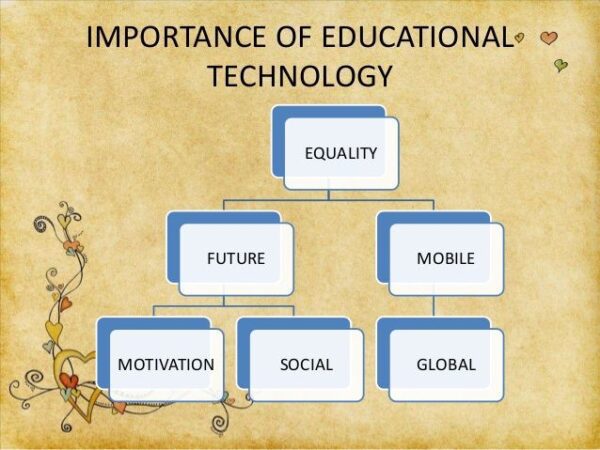Video marketing for edtech is not so different from video marketing in other industries and sectors. Therefore, the solution you are searching for is quite easy to find. In today’s digital age, video has become one of the most powerful and effective tools for marketing. Video marketing for edtech is even more critical because current learners are highly visual and like engaging content.

As a result, incorporating video into your edtech marketing strategy can increase your brand awareness, boost user engagement, and ultimately drive more conversions.
Video marketing for edtech can take many different forms, from explainer videos and product demos to educational webinars and customer testimonials. The key is to create content that is both informative and engaging, while also showcasing the unique value proposition of your edtech product or service. By doing so, you can establish your brand as a thought leader in the industry and build trust with your target audience.
To get started with video marketing for edtech, you need to develop a comprehensive strategy that takes into account your target audience, marketing goals, and available resources. This may include creating a content calendar, developing a video production process, and identifying the best channels for distributing your videos. With the right approach, video marketing can be a highly effective way to grow your edtech business and drive long-term success.
Understanding the EdTech Market Landscape
As the tdtech industry continues to grow, it has become increasingly important to understand the market landscape in order to effectively market your product.
Importance of Video Marketing in EdTech

Video marketing is a powerful tool for edtech companies to showcase their products and services. In fact, according to a recent survey, 92% of businesses say that video provides a good return on investment. Videos can help you explain complex concepts, showcase your product features, and provide engaging content for your target audience.
Additionally, video marketing can help you stand out in a crowded market. With so many edtech companies vying for attention, it’s important to differentiate yourself from the competition. Videos can help you showcase your unique value proposition and build trust with potential customers.
Identifying Target Audience and Pain Points
In order to effectively market your edtech product, you need to understand your target audience and their pain points. Your target audience may include teachers, administrators, parents, or students, and each group may have different needs and pain points.
To identify your target audience, you can use data from your existing customer base, conduct surveys or focus groups, or analyze data from the edtech market. Once you have identified your target audience, you can begin to understand their needs and how your product can solve them.
For example, if your target audience is teachers, you may find that their pain points include lack of time, difficulty in engaging students, or a need for more resources. You can then create videos that address these pain points by showcasing how your product can save time, increase student engagement, or provide additional resources.

Understanding the EdTech market landscape is crucial for any company looking to effectively market their product. By using video marketing and identifying your target audience and their pain points, you can differentiate yourself from the competition and create engaging content that resonates with potential customers.
1. Developing Effective Video Marketing Strategies
Video marketing is an essential part of edtech marketing strategy and is associated with increased audience engagement, brand awareness, and conversions. To develop effective video marketing strategies, you need to focus on three key areas: content creation and storytelling, optimizing for search engines and social media, and leveraging analytics and metrics for improvement.
Content Creation and Storytelling
The first step in developing an effective video marketing strategy is to create compelling content that tells a story. Your videos should be informative, educational, and entertaining. They should be designed to engage your audience and keep them interested in your brand.
To create effective video content, you need to understand your audience and their needs. You should develop buyer personas that help you understand your target audience’s demographics, interests, and pain points. This information can help you create videos that resonate with your audience and address their specific needs.

When creating video content, you should also focus on storytelling. Your videos should tell a story that connects with your audience emotionally. You can use storytelling techniques such as humor, drama, and suspense to create videos that are memorable and impactful.
Optimizing for Search Engines and Social Media
Once you have created compelling video content, you need to optimize it for search engines and social media. This will help you reach a wider audience and drive more traffic to your website. You should use relevant keywords in your video titles, descriptions, and tags. You should also include a transcript of your video on your website to make it more accessible to search engines.
For social media video optimization, you should create videos that are shareable and engaging. You also need to use social media platforms such as Facebook, X, Instagram, TikTok, and LinkedIn to promote your videos and reach a wider audience.
Leveraging Analytics and Metrics for Improvement
Finally, you should leverage analytics and metrics to measure the success of your video marketing campaigns and make improvements over time. You can use tools such as Google Analytics and YouTube Analytics to track metrics such as views, engagement, and conversions.

Analyzing these metrics can help you identify areas where your videos are performing well and areas where they need improvement. You can then make changes to your video marketing strategy to improve your results over time.
Developing effective video marketing strategies requires a focus on content creation and storytelling, optimizing for search engines and social media, and leveraging analytics and metrics for improvement. By following these best practices, you can create videos that engage your audience, drive traffic to your website, and ultimately help you achieve your marketing goals.
2. Maximizing Engagement and Conversion
When it comes to video marketing for edtech, maximizing engagement and conversion should be at the forefront of your strategy as a primary goal. Creating engaging and educational content is key to capturing the attention of your target audience and keeping them interested in your brand.
Additionally, implementing conversion rate optimization techniques can help increase the likelihood of users taking action on your landing pages. Building trust and credibility with your audience is also essential for establishing a long-term relationship with them.
Creating Engaging and Educational Content
Creating engaging and educational content requires you to focus on providing value to your audience. This means creating videos that are informative, entertaining, and relevant to their needs. Use storytelling techniques to make your videos more relatable and memorable. Incorporate visuals and animations to make your content more engaging and help your audience understand complex concepts.

Conversion Rate Optimization Techniques
Conversion rate optimization (CRO) techniques can help increase the number of users who take action on your landing pages. One effective technique is to use clear and concise calls-to-action (CTAs) that tell users exactly what they need to do next. Use A/B testing to experiment with different CTAs and landing page designs to see what works best for your audience.
Building Trust and Credibility
Building trust and credibility with your audience is essential for establishing a long-term relationship with them. Use social proof, such as customer testimonials and case studies, to show that your edtech solution is effective and trustworthy. Be transparent about your pricing and policies to show that you value your customers’ trust.
Maximizing engagement and conversion is crucial for successful video marketing in edtech. By creating engaging and educational content, implementing CRO techniques, and building trust and credibility with your audience, you can increase user engagement and drive conversions on your landing pages.
3. Integrating Video Marketing with Other Digital Strategies
While video marketing for edtech can be powerful and effective, it is important to integrate it with other digital strategies to maximize its impact. This section highlights two key strategies for integrating video marketing with other digital tactics: email marketing and lead nurturing, and content syndication and partnerships.

Email Marketing and Lead Nurturing
Email marketing is a highly effective way to reach your target audience and nurture leads. By integrating video content into your email campaigns, you can increase engagement and drive conversions. For example, you can use video to showcase your products or services, provide tutorials or demos, or share customer success stories.
To get the most out of video in your email campaigns, consider the following tips:
- Keep your videos short and to the point. Aim for a length of 60-90 seconds.
- Use attention-grabbing headlines and thumbnails to encourage viewers to click.
- Include a clear call-to-action (CTA) in your video and in your email.
Content Syndication and Partnerships
Content syndication and partnerships can help you reach a wider audience and drive traffic to your website. By partnering with other edtech companies or content providers, you can share your video content with their audiences and vice versa.
To make the most of content syndication and partnerships, consider the following tips:
- Identify potential partners who have a similar target audience, but are not direct competitors.
- Create a landing page on your website specifically for the content you are syndicating.
- Use social media to promote your video content and reach a wider audience.

Integrating video marketing with other digital strategies can help you create a cohesive and effective marketing campaign that drives results for your edtech business.
4. Measuring Success and ROI in Video Marketing
All your marketing efforts are useless if you fail to measure their success and ROI for more adjustments and better results. But how do you measure the success of your video marketing campaigns and calculate your return on investment (ROI)? Here are some key performance indicators (KPIs) and ROI calculations that can help you measure the success of your video marketing campaigns.
Key Performance Indicators and ROI Calculations
Before launching a video marketing campaign, it’s important to define your KPIs and set goals. Some common KPIs for video marketing include:
- View count: the number of times your video has been viewed
- Engagement rate: the percentage of viewers who engage with your video (likes, comments, shares)
- Click-through rate (CTR): the percentage of viewers who click on a call-to-action (CTA) in your video
- Conversion rate: the percentage of viewers who take a desired action (such as signing up for a free trial or purchasing a product) after watching your video
To calculate ROI, you’ll need to track the costs of producing and promoting your video, as well as the revenue generated from your campaign. ROI can be calculated using the following formula:
ROI = (Revenue – Cost) / Cost
For example, if you spent $10,000 on a video marketing campaign and generated $20,000 in revenue, your ROI would be:
ROI = ($20,000 – $10,000) / $10,000 = 1

This means that for every dollar you spent on your video marketing campaign, you generated an additional dollar in revenue.
Adapting to Market Trends and Feedback
To ensure that your video marketing campaigns remain cost-effective and aligned with market trends, it’s important to constantly monitor and adapt your strategy based on feedback and metrics. Analyzing viewer feedback and metrics can help you identify areas for improvement and optimize your campaigns for maximum impact.
Stay up-to-date on trending topics and incorporate them into your video marketing strategy. This will ensure you increase the chances of your videos going viral and reaching a wider audience. It’s also important to stay within your budget and avoid overspending on video production and promotion.
Overall, measuring the success of your video marketing campaigns and calculating ROI is essential for optimizing your strategy and generating maximum impact for your edtech business. By setting clear goals, defining KPIs, and tracking metrics, you can ensure that your video marketing campaigns are cost-effective and aligned with market trends.
